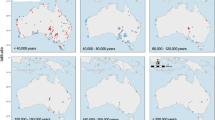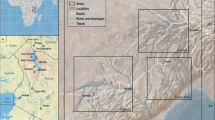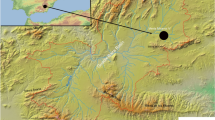Abstract
THE development of reliable methods of world-wide stratigraphic correlation involves the gradual replacement of empirical and traditional ‘index fossils’ by zonal index species selected on the basis of carefully analysed factors concerning their evolution and distribution. This approach favours abundant fossils to which statistical methods of population study can be applied, such as Foraminifera; rapidly evolving lineages, such as larger Foraminifera; and widespread forms, relatively independent of facies, such as planktonic organisms. It also necessitates a major effort to clarify stratigraphic terminology and classification which is expected to be significantly advanced soon as a result of the work of the Commission on Stratigraphy of the International Geological Congress. The framework of the conventional stratigraphic subdivisions of geological time, dating back to the time when geological knowledge began to accumulate long ago in Europe, is found to lack precision and to suffer from other deficiencies when attempts are made to accommodate in it the results of precise stratigraphic correlation in previously unknown parts of the world. Patient co-operative work of stratigraphers and palaeontologists in different continents is required in order to overcome the difficulties and misunderstandings resulting from an over-extension of weakly founded terms and concepts. As Gignoux1 has stated, it is essential first to establish local stratigraphic sequences (on a rock stratigraphic and zonal biostratigraphic basis, I might now add) and to generalize them only cautiously.
This is a preview of subscription content, access via your institution
Access options
Subscribe to this journal
Receive 51 print issues and online access
$199.00 per year
only $3.90 per issue
Buy this article
- Purchase on Springer Link
- Instant access to full article PDF
Prices may be subject to local taxes which are calculated during checkout
Similar content being viewed by others
References
Gignoux, M., “Géologie stratigraphique”, fourth ed., 599, footnote 2 (Paris, 1950).
Todd, R., Cloud, P. E., Low, D., and Schmidt, R. G., Amer. J. Sci., 252, 673 (1954).
Cloud, P. E., Schmidt, R. G., and Burke, H. W., U.S. Geol. Survey, prof. Paper 280-A (1956).
Glaessner, M. F., J. Geol. Soc. India, 1, 58 (1959).
Glaessner, M. F., in “Handb. d. Stratigraphischen Geologie”, edit. by Lotze, F., 3 (1) Tertiary, first part, 303 (1959).
Cole, W. S., U.S. Geol. Survey Prof. Paper 280-I, 321 (1957).
Eames, F. E., Banner, F. T., Blow, W. H., and Clarke, W. J., Nature, 185, 447 (1960).
Cole, W. S., Todd, R., and Johnson, C. G., Bull. Amer. Paleont., 41, 77 (1960).
Koch, R., Ecologae geol. Helv., 19, 732 (1926).
Author information
Authors and Affiliations
Rights and permissions
About this article
Cite this article
GLAESSNER, M. West-Pacific Stratigraphic Correlation. Nature 186, 1039–1040 (1960). https://doi.org/10.1038/1861039a0
Issue Date:
DOI: https://doi.org/10.1038/1861039a0
Comments
By submitting a comment you agree to abide by our Terms and Community Guidelines. If you find something abusive or that does not comply with our terms or guidelines please flag it as inappropriate.



